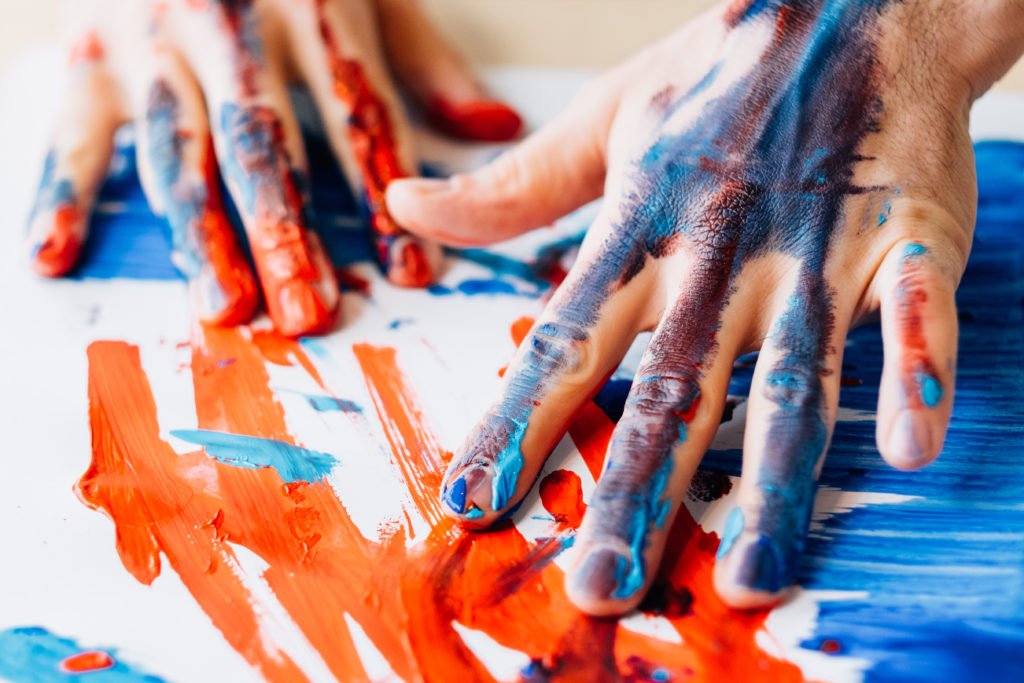
While it’s no secret that therapies work when it comes to treating addiction, over the years we have learned more about alternative therapies that have also proven to be effective. More and more treatment centers have begun utilizing these alternative and experiential treatments and therapies such as yoga, meditation, and acupuncture.
The list of alternative therapies goes way beyond just those holistic treatments. Art therapy for addiction has become popular amongst treatment professionals as a way to complement the more “traditional” treatments.
Let’s take a deeper look at art therapy, how it works, how it fits into the addiction recovery process, and how you can utilize it during treatment at LUNA Recovery Services in Texas.
What Is Art Therapy?
Art therapy is a type of experiential therapy, meaning it is not considered one of the traditional forms of addiction therapy. Art therapy focuses on the emotional and spiritual side of addiction treatment through various forms of art. Art therapy does not require any sort of skill level. All you need is an open mind and the willingness to give it a try.
While more traditional therapies might feel very strict and rigid, experiential therapies, such as art therapy provide more of a relaxed environment and allows you to call on your creative side to help work through some of your issues. Art therapy also allows you to learn new and healthy ways to express your feelings and deal with any addiction-related issues once you have finished treatment and returned to your regular life.
What Is The History of Art Therapy?
While art therapy might be relatively new to the addiction space, it is hardly new as a concept. Art therapy has been used in some capacity throughout history as a way to communicate, express one’s self, and interact with others.
The actual term art therapy was coined by British artist Adrian Hill back in the early 1940s. Hill found that painting and drawing while recovering from tuberculosis helped him mentally which, in turn, helped him physically. Since there was no formal training at the time, in the early days of art therapy, therapists often worked closely with psychiatrists, psychologists, and other mental health professionals.
What Are The Different Types of Art Therapy?
While you might hear the term art therapy and immediately think of art in the traditional sense such as painting or drawing, art therapy is an umbrella term used to describe any type of artistic activity. As long as you are using your creativity and imagination to express yourself healthily and productively, the activity can be considered art therapy.
Some of the more common forms of art therapy include:
- Drawing
- Painting
- Finger painting
- Dancing
- Sculpting
- Music
- Acting
- Writing
- Carving
- Doodling
- Scribbling
What Can Art Therapy Help Treat?
Art therapy is effective in people of all ages and genders. It can help express feelings that you might not be able to convey or might not be comfortable sharing out loud. Art therapy is also a great way to help build a person’s self-esteem and confidence.
Art therapy has proven to be especially effective when it comes to those dealing with the following health issues:
- Substance abuse
- Eating disorders such as anorexia or bulimia
- Depression
- Anxiety
- PTSD
- Stress
- ADD/ADHD
- Heart disease
- Cognitive impairments
- Family and relationship problems
- Schizophrenia
What Is The Goal of Art Therapy?
One of the biggest goals of art therapy is to help those participating return to a healthy place mentally. After all, if you aren’t mentally healthy then you can’t truly be healthy overall. Specifically, art therapy can help those struggling by doing the following:
- Reducing anxiety
- Developing social skills
- Building self-esteem
- Resolving emotional conflict
- Encouraging self-awareness
What Roles Does Art Therapy Play When It Comes To Mental Health Struggles?
Many people who are suffering from substance abuse and addiction are also dealing with mental health struggles as well. Oftentimes, it is those mental health struggles that lead them down the path to substance abuse in the first place. They are looking for anything that will help them feel better and drugs and/or alcohol might be the easiest solution.
On the flip side of that, sometimes the drug and alcohol abuse can lead to the development of mental health issues as a result of those substances changing the chemical makeup of the brain.
Since mental health is such a significant component of addiction treatment and therapy, art therapy can be a great way to work through some of those mental struggles healthily and creatively. Some people might utilize art therapy to recreate or reenact something in their life that might have caused them mental anguish. Others might turn to art to express how they are feeling at that moment.
Art therapy has been proven especially effective for those suffering from post-traumatic stress disorder (PTSD) such as veterans and first responders. As it pertains to PTSD specifically, art therapy can help with the following:
- Externalize those traumatic memories
- Resolve the painful emotions associated with those memories
- Promote an emotional release
- Encourage healthy behaviors
- Restore self-esteem
- Reduce negative behaviors
What Role Does Art Therapy Play in Addiction Treatment?
For as long as art therapy has been recognized as an official form of therapy, it has been used to help those suffering from substance abuse and addiction. Specifically, art therapy provides those suffering from addiction a way to express themselves and their emotions in a safe and supportive way. It can help lessen the shame of addiction while helping those suffering work through their problems in a more creative way.
Art therapy is not intended to replace any of the more traditional therapies and treatments such as individual therapy, group therapy, family counseling, and 12-step meetings. Instead, it is meant to complement them in the overall treatment and recovery process.
What Can I Expect During Art Therapy?
While every facility differs, art therapy, as well as other experiential therapies, tend to be offered to those participating in inpatient treatment and outpatient treatment as well. While traditional therapy sessions might be mentally taxing and exhausting, art therapy is designed to be the exact opposite of that, promoting creativity and relaxation.
During a typical art therapy session, you might either work alone or with a group to create an artistic piece. In some cases, you might have the freedom to create whatever you want and sometimes the therapist leading the session might provide a prompt or theme.
Three techniques are commonly used in art therapy. They are:
- Active imagination – This technique allows you to let your mind roam and be spontaneous, allowing you to create whatever comes to you.
- Third-hand approach – With the third-hand approach, you are still in control of the overall vision of the piece but the therapist will help with the actual production.
- Gestalt method – With the gestalt method, your therapist will help you work through some of your feelings through art. The artwork you create might be used as a jumping-off point for a deeper conversation or it might be used to express yourself creatively.
Art therapy sessions are typically led by a certified art therapist who has been trained in using art as a way to promote recovery and healing. In many cases, art therapists are also licensed and trained in traditional therapy as well, allowing them to help with the emotions and memories that might arise during the creative process.
How Can I Continue To Utilize Art Therapy After Treatment?
One of the best things about art therapy is that it can be done pretty much anywhere. This means that even after you have completed treatment and started your new, sober life, you can continue to utilize your art therapy technique in your daily life.
Art therapy post-treatment can be especially beneficial as a way to help combat cravings and reduce the chances of a relapse. For those who drank or did drugs during a certain time of the day, it can also be a great way for them to replace that activity with something that is healthier and promotes creativity.
Are You Interested in Art Therapy For Addiction?
Addiction treatment programs aren’t “one-size-fits-all” programs. That’s one of the many reasons why art therapy has proven to be so successful. It allows each individual to express themselves in their unique way through the use of art.
At LUNA Recovery, we understand that everyone recovers from addiction in their way. That’s why we offer custom treatment plans to fit each person and their needs. If you or someone you know needs addiction treatment, our art therapy program for addiction can help. Contact us today to learn more.
Dr. Allaire received his Bachelors of Science in Biology from the University of Houston, as Valedictorian of the College of Natural Sciences and Mathematics, and his Medical Doctorate from Baylor College of Medicine, where he served as Chief Resident. He is the medical monitor for the Physician Counseling Committee of the Harris County Medical Society and the Medical Director of Serenity House Detox. Dr. Allaire specializes in medically assisted detox cases, treating patients in recovery from addiction or other mental health disorders, the medical assessment and monitoring of patients with addictive disorders, medical care related to eating disorders and the medical treatment of patients with mental health conditions.



